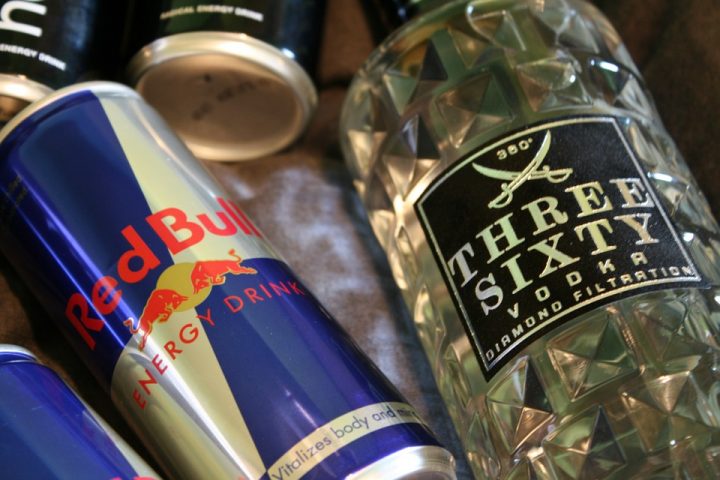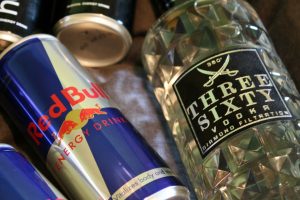

The idea that combining alcohol and caffeine allows people to drink longer has not only been well studied, it’s been well tested in more, uh, real life settings. In fact, the one in four high school and college aged students who boost their booze every year might say, “That’s the point.” But recent scholarship that suggests mixing alcohol and caffeine may actually prompt people to want to drink more sheds new light on the issue and is worth exploring.
Energy drinks like Red Bull surged in popularity upon their introduction in 1987, but it soon became obvious that a simple pick me up more refreshing and conveniently packaged than coffee had other applications. Young people who wanted to party longer quickly took to mixing highly caffeinated beverages with vodka, gin, and Jägermeister. Bartenders – and marketers – noticed. Soon there were high-profile partnerships and promotions involving high caffeine beverage companies and liquor distributors and event promoters. Then, eliminating a step and going straight to the consumer, premixed caffeine-alcohol concoctions made their way onto shelves. Game on. Big CAB brands like Torque and Four Loko were incredibly popular and sales of CABs saw a 67 percent increase between 2002 and 2008 alone.
But as the popularity of alcoholic energy drinks rose, so too did the frequency of problems and emergency-room (ER) visits among those who drank them. About 2,600 ER visits in 2011 had to do with alcoholic energy drinks. That spike, along with well-publicized research that drew a connection between CABs, increased alcohol consumption, and exposure to risky behavior prompted FDA warnings and, eventually, forced most brands to “change or die,” as it were. By 2010, premixed alcoholic energy drinks like Four Loko—which contained 156 mg of caffeine and 12 percent alcohol, or the equivalent of four beers and a cup of coffee— were banned.
The cause of all the trouble, researchers say, is two-fold: 1) alcohol and caffeine-infused drinks can make people think they are not as drunk as if they’d only had alcohol, and 2) they may actually cause them to crave another drink more strongly. These effects could explain why people who add caffeine to their cocktail are at greater risk of being in an accident or making a decision they will later regret (like getting in the car with a drunk driver or engaging in risky intimate behaviors) than those who stick to straight booze.
The high caffeine levels in many pre-mixed and bar-mixed CAB essentially masks intoxication which often makes people underestimate how drunk they are and impairs their ability to cut themselves off. In fact, several experiments show that those who drank alcoholic energy drinks rated their own drunkenness as lower than subjects with the same blood alcohol content who only had alcohol. In addition, researchers say that feeling tired is an important factor in many people’s decision to stop drinking, but that caffeine renders these feelings obsolete. If many feel they are alert and can keep drinking, apparently they will.
Interestingly, the latest research goes beyond exploring how stamina and judgment are altered when alcohol is mixed with caffeine to explore how impulse and expected reward might be involved.
Essentially the new study shows that something about the alcohol-caffeine combination creates a “priming effect” in consumers that increases expectation of a pleasurable result and, in turn, creates a stronger urge to drink.
Researchers explored their theory by pouring drinks for 75 people, half with vodka and soda water, and the other half with vodka and Red Bull. Adding Red Bull made participants twice as likely to want to drink more than if they had consumed only alcohol, which was considered a small to medium effect. It was not confirmed whether participants actually would consume more drinks—just whether or not they wanted to.
While only one piece of the puzzle, this latest evidence is significant, as it represents yet another reason why alcoholic energy drinks may be significantly riskier in terms of over-drinking and adverse outcomes. And the problem is an important one to study because, while premixed CABs have been pulled from the shelves, alcohol and caffeine is still a fixture at many restaurants and watering holes and is still widely available to anyone who can find their way to a liquor store or party. So, while some savvy marketers may like to sell you on beverages that “give you wings,” we all need to be aware of just how hard they can make you fall.